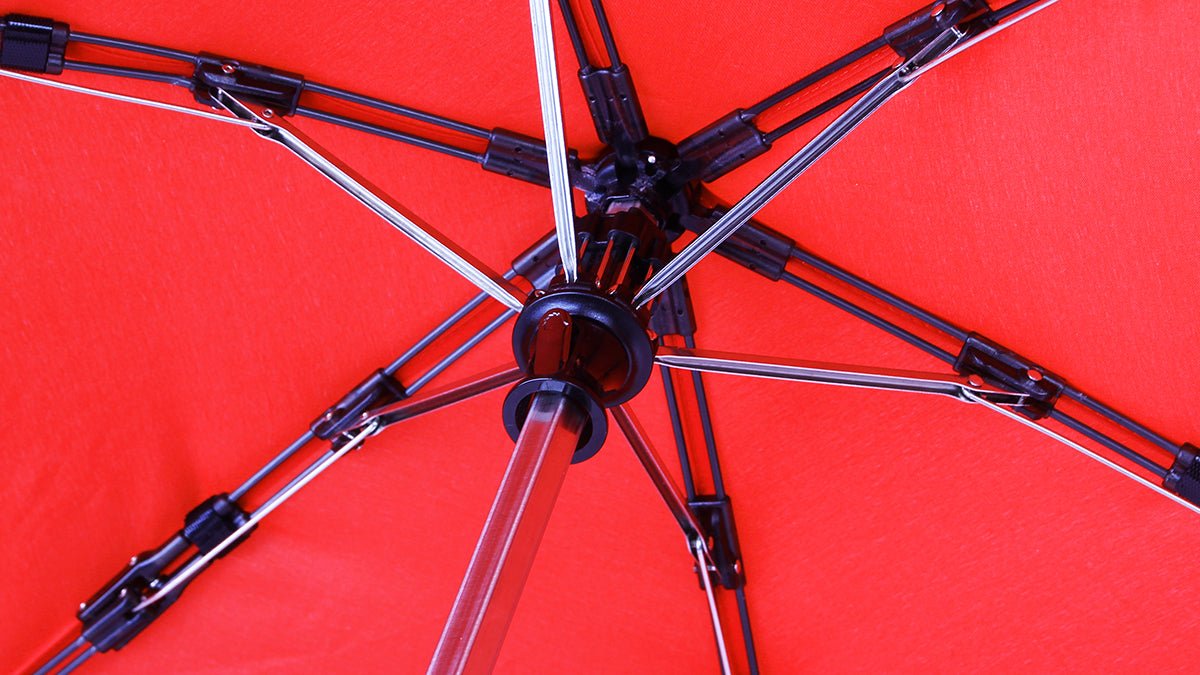Your Cart is Empty
Hi Everyone,
We're back at it again and this blog post would cover the design and construction of the Slider Assembly; the heart and soul of our patented WindFlex Suspension system. Inspired from the automotive industry and how your car shocks operate and actuate to create a smoother ride, the WindFlex system is the ultimate defense against wind.
Central to the entire umbrella, the Slider Assembly is connected to the lower linkage of all 6 ribs, rides along the stem, and equipped with a lock/release button to deploy/collapse the canopy. The WindFlex system, designed to prevent the umbrella from flipping inside out, works by having each individual rib mounted on a sliding mechanism.Each rib within the frame architecture is designed to pivot and adjust independently to combat even against the most chaotic winds. This unique feature was only possible with our one-of-a-kind Slider Assembly.
 Slider shuttles in Action
Slider shuttles in Action
The early designs from 2015 used a very different type of sliding mechanism featuring more of a pin-and-slot design as opposed to the current shuttle-and-rail system. The pin-and-slot mechanism worked great, however it was very difficult to manufacture and suffered from poor reliability. The mechanism also required a very complex machined slider core, and created a lot of friction in between dynamic components. Despite these obstacles and restrictions, we were able to create 3D printed proof of concepts and even wind tested these prototypes to moderate success.
 3D Printed Prototype Slider
3D Printed Prototype Slider

Prototype Slider in Action!
During the strenuous wind testing; the pins would jam quite often and the system would bind if everything was not aligned perfectly. A design change was necessary, and hence began the concepts behind the shuttle-and-rail design.
 Evolution of the WindFlex Suspension System
Evolution of the WindFlex Suspension System
On the lower linkage of each rib is pinned to a polymer “Shuttle” setup to slide up and down the metal “Dual Rail” system fixed to the Slider’s core. The polymer and metal sliding surfaces create a combination of textures which does not generate much friction, allowing free dynamic movements without the need of any lubricants or maintenance. Metal rails and injection molded polymer parts were simple to source and fabricate, eliminating the issue with the pin-and-slot’s complex machined core.

After various iterations, the final assembly consisted of a minimal number of parts needed; no complex threads, retaining rings, or adhesives. The assembly was designed to be easily snapped together with the central core without any complex tools or fixtures.

This was an industry first, and we were extremely happy with the outcome. Just check out the performance below!
Best of all, we've got this baby fully patented! We've come a long way from hand sketch drawings and 3D printed prototypes to full scale manufacturing and a patented design!


Hope you guys enjoyed this post. Be sure to stay tuned for the next one.
Regards,
Team Hedgehog
Comments will be approved before showing up.

